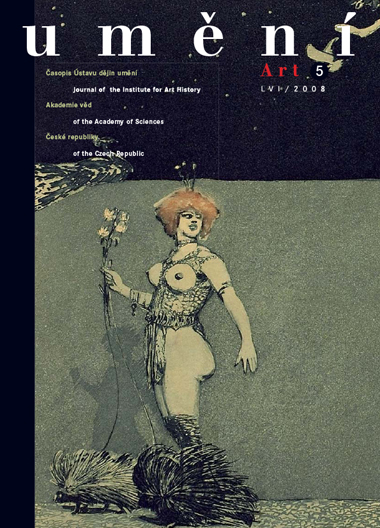Petr Skalický
Vera effigies sv. Václava z někdejšího kostela sv. Václava na Malé Straně v Praze
Recently restoration work was done on a small panel painting of the Vera Effigies of St Wenceslas owned by the Church of St Nicholas in Malá Strana in Prague (depositary of the Prague Archbishopric). It originally came from the former Church of St Wenceslas in the northwest corner of the vocational building of the Jesuits of Malá Strana, which was apparently one of the most important devotional sites dedicated to St Wenceslas. The panel painting is without question one of the surviving devotional copies of a lost prototype of the Vera Effigies of the saint, which was evidently created sometime during the third-quarter of the 14th century. Alongside this copy, which probably originated in the second half of the 16th century, an entire series of relics have survived that are copies (for example, the Vera Effigies from the former Augustinian monastery Na Zderaze, oil on copper plate, Prague Municipal Museum), reproductions (mainly prints from the monastery Na Zderaze), and other typus variations. It is worth noting that the devotional typus of the Vera Effigies of St Wenceslas appears in churches and chapels dedicated to St Wenceslas. Key to understanding the modern-age veneration of the painting as a de facto relic is probably the epicentres from where the typus spread, which we can identify as the Monastery of Na Zderaze and the Church of St Wenceslas in Malá Strana. It is the paintings from these locations that are of crucial significance and warrant special attention in the future. The iconographic construction of the Vera Effigies of St Wenceslas is not connected just with the depiction of the saint in the initial A on fol. 267v in Jan of Středa's Liber Viaticus (second half of the 1350s, Prague, Library of the National Museum), as is noted in some places in the literature. Its genesis stretches further back, at least to the 1440s. It was thus created gradually, or in several Italianising waves. In relation to the classification and interpretation of the prototype, special attention should also be devoted to the format of two key copies and their seemingly marginal ornamentation.
Full-text in the Digital Library of the Czech Academy of Sciences:
https://kramerius.lib.cas.cz/uuid/uuid:12b34ca1-9173-c836-c2cc-6e798d980d6e
< back

